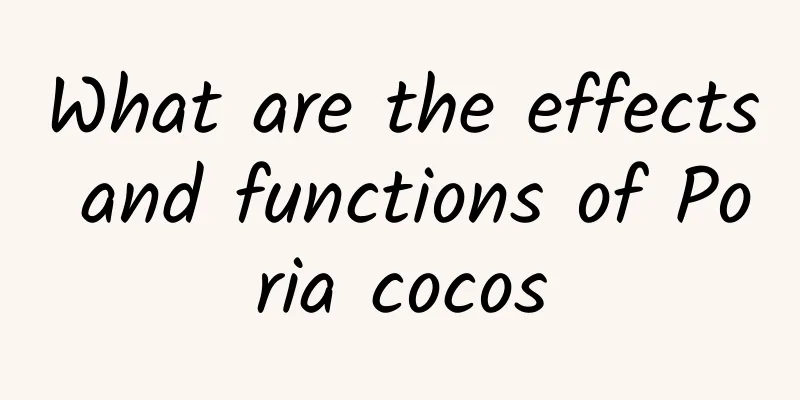The efficacy and function of the bristlecone

|
The bristlecone is a traditional Chinese medicine. In addition to the effects we know in daily life, the bristlecone actually has many other effects and functions. Let’s take a look at them right away. [Source] Medicinal material source: branches and leaves of the plant Achyranthes bidentata of the Melastomataceae family. 【Original form】 Shrub, 1-2m high. The stem is slightly quadrangular or cylindrical, without grooves or rarely with shallow grooves, densely covered with spreading glandular hairs when young. Petiole 1.5-5.5 (-6) cm long; leaf blade thin, hard, papery or nearly membranous, ovate or elliptic, gradually pointed at apex, shallowly cordate to rounded or obtuse at base, 11-16.5 (-19) cm long, 5-7.5 (-9) cm wide, with irregular small teeth on margin, tooth tips with bristles, usually with cilia, 5-7 basal veins, covered with small bran-like scales on both sides, basal veins and lateral veins flat on leaf surface, basal veins and lateral veins obviously raised on dorsal surface, densely covered with stellate hairs when young. The panicle composed of cymes is terminal, 12-25cm long and 2.5-6cm wide, with two leaf-like involucres at the base, and the inflorescence axis, pedicels and calyx are densely covered with chaff-like stellate hairs; the bracts and bracteoles are small, subulate, about 1mm long, and fall off early; the calyx is about 6mm long, narrowly altar-shaped, with obtuse four edges, with 8 longitudinal veins, 4 of which are not obvious, the lobes are extremely small, almost not obvious, with a protruding small tip at the tip, the petals are red or pink, ovate, about 6mm long, with a small piece protruding from the upper right corner, with a protruding small tip at the tip, and are glabrous; the connectives of both long and short stamens are raised, and the bases are elongated into short spurs; the ovary is fusiform, inferior, and glabrous. The capsule is elliptical, with a placenta axis at the tip, about 5.5mm long, and cracked at the top hole; the persistent calyx is longer than the fruit, altar-shaped, and constricted near the tip. The flowering period is around October, and the fruiting period is around March. [Habitat distribution] Ecological environment: Grown in moist places in sparse and dense forests and beside streams and rivers at an altitude of 700-930m. 【Nature and flavor】 Bitter; slightly sweet; cool in nature 【Functions and indications】 Clears away heat and detoxifies; promotes the removal of dampness. Mainly used for dysentery, diarrhea, sores and furunculosis [Usage and Dosage] For oral use: decoction, 6-15g. For external use: take appropriate amount and mash it for application. 【Excerpt】 Chinese Materia Medica The above is an introduction to some relevant knowledge about the Bristol wood. Do you have a better understanding of it? I hope everyone can apply the bristlecone wood in life to serve our health. |
<<: The efficacy and function of the herbaceous tea
>>: The efficacy and function of Gangmei root
Recommend
The efficacy and function of betel nut
The efficacy and function of the Chinese medicina...
Chinese patent medicine for regulating the five internal organs and six bowels
The Chinese medicine prescriptions for regulating...
To open the door to the "lost world", the "key" is actually in the poop?
The mass extinction event at the end of the Permi...
Put everything in the refrigerator? Be careful, it will go bad faster!
Lock the refrigerator to keep it fresh | Tuchong ...
A new problem for mankind: the "sin" and "punishment" of space activities
With the development of aerospace technology and ...
The amazing "footless bird" almost never touches the ground in its entire life. It sleeps and mates in the air.
Have you ever heard of a bird that spends almost ...
Attention, spectators, this kind of melon cannot be eaten!
Review expert: Hu Jiayu, Master of Botany, Univer...
The efficacy and effects of Cishi
Cixi has rich nutritional value. It can not only ...
It has suddenly become popular recently, and the flames jumped to nearly 5 meters in 3 seconds! Don't follow the trend!
Approaching the Chinese New Year Netizens' &q...
Can drinking hot water help you lose weight? 15 questions about drinking water, all answered at once
This year's latest "Workplace Health Sta...
This ancient giant bear looks cute, but actually...
The River of Life exhibition area of the Shangh...
It turns out there are things that will make you uglier the more you eat!
One minute with the doctor, the postures are cons...
Nosto: Fashion E-commerce Report 2019
According to a new report from Nosto, “Fashion E-...
The efficacy and function of Sanhuang powder
What are the effects and functions of Sanhuang Po...
The efficacy and function of hairy leaf Xiaohan medicine
As a very common Chinese medicinal material in da...









